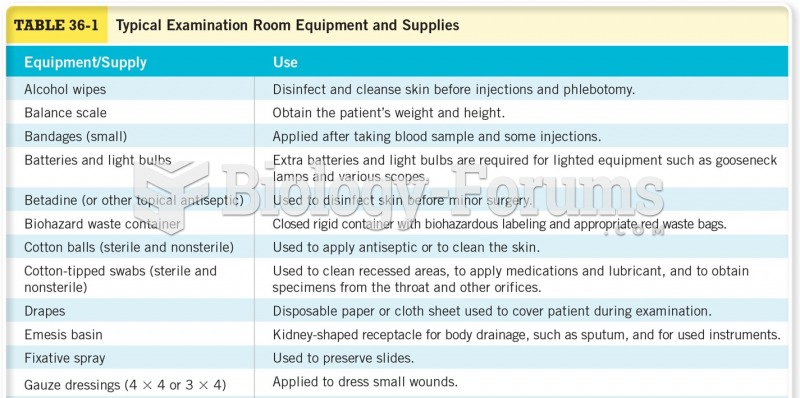Answer to Question 1
Persons with LTBI are infected with M. tuberculosis but do not have active TB disease; they do not
feel sick or have any symptoms. The only sign of a TB infection is a positive reaction to the tuberculin
skin test or to TB blood tests. Persons with LTBI are not infectious and cannot spread TB infection
to others. Overall, about 5 to 10 of patients with latent disease will develop active TB disease
at some time in their lives. About half of those people who develop active TB will do so within the
first 2 years of infection. For persons whose immune systems are weak, especially those with HIV
infection, the risk of developing active TB disease is considerably higher.
Persons in the following high-risk groups should be treated for LTBI if their reaction to the Mantoux
tuberculin skin test is greater than or equal to 5 mm:
HIV-infected persons
Recent contacts of a TB patient
Persons with fibrotic changes on chest radiograph consistent with old TB
Patients with organ transplants or who are immunosuppressed
In addition, persons in the following high-risk groups should be considered for treatment of LTBI if
their reaction to the Mantoux tuberculin skin test is greater than or equal to 10 mm:
Recent arrivals (less than 5 years) from high-prevalence countries
Injection drug users
Residents and employees of high-risk congregate settings (e.g., correctional facilities, nursing
homes, homeless shelters, hospitals, and other health care facilities)
Mycobacteriology laboratory personnel
Persons with medical conditions that increase the risk of progression to active TB infection
Children under 4 years of age, or children and adolescents exposed to adults in high-risk
categories
Yes. Because B.A. had a response greater than 15 mm and has a history of type II diabetes, she is at
greater risk for progressing to active TB infection and should receive treatment.
Answer to Question 2
First, B.A. will need a CXR examination. For persons with reactions greater than or equal to 10 mm
and persons with symptoms suggesting TB (e.g., cough, anorexia, weight loss, fever)regardless
of the size of the skin-test reactionthis should be done within 72 hours. If the CXR examination
is abnormal and/or symptoms compatible with TB are present, the patient should undergo sputum
smear and culture examinations. At least three sputum specimens should be submitted.







